
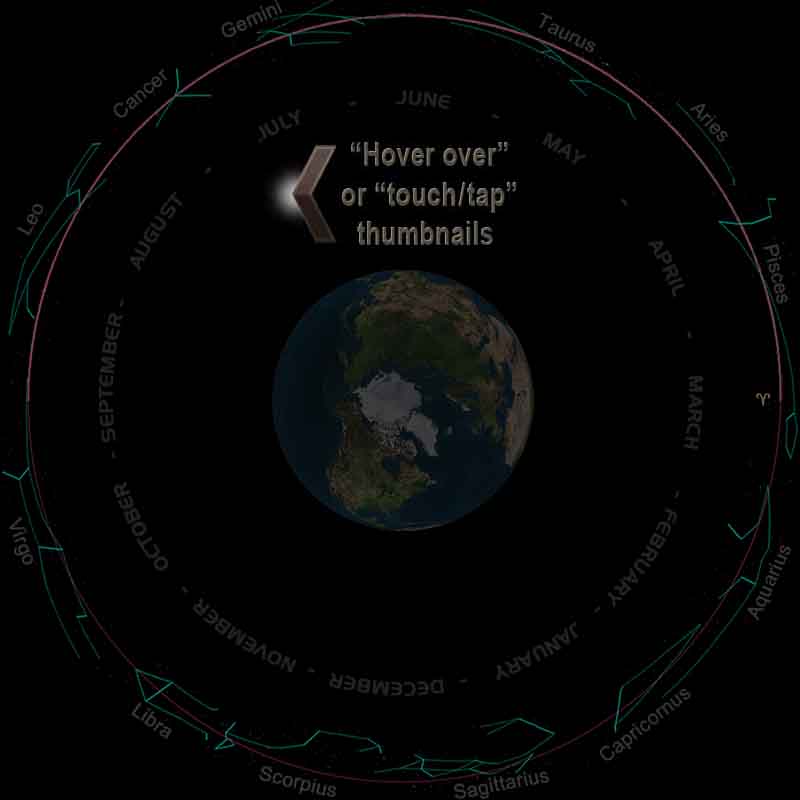

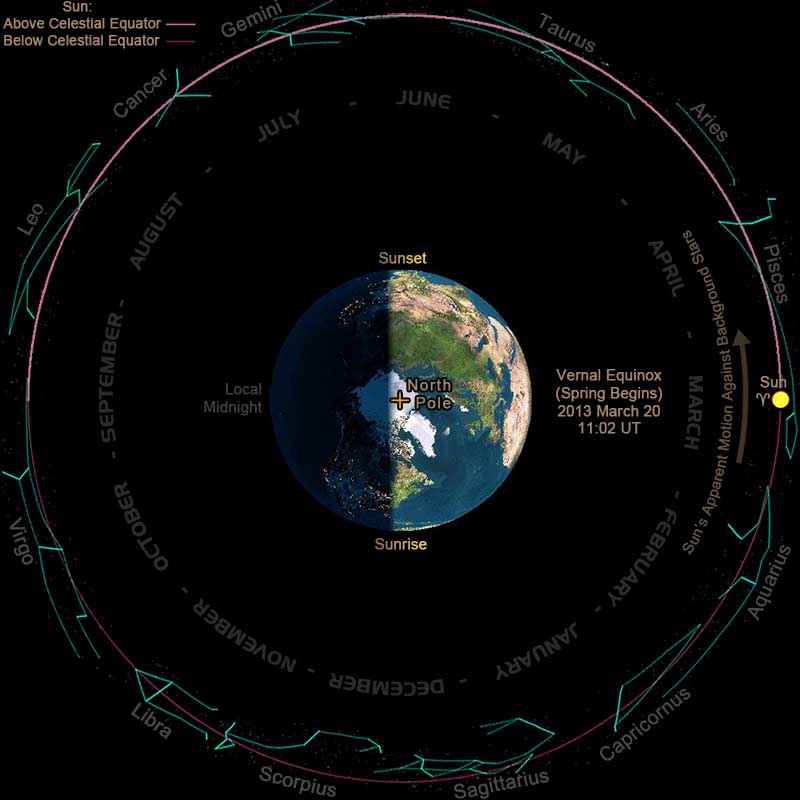
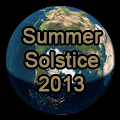
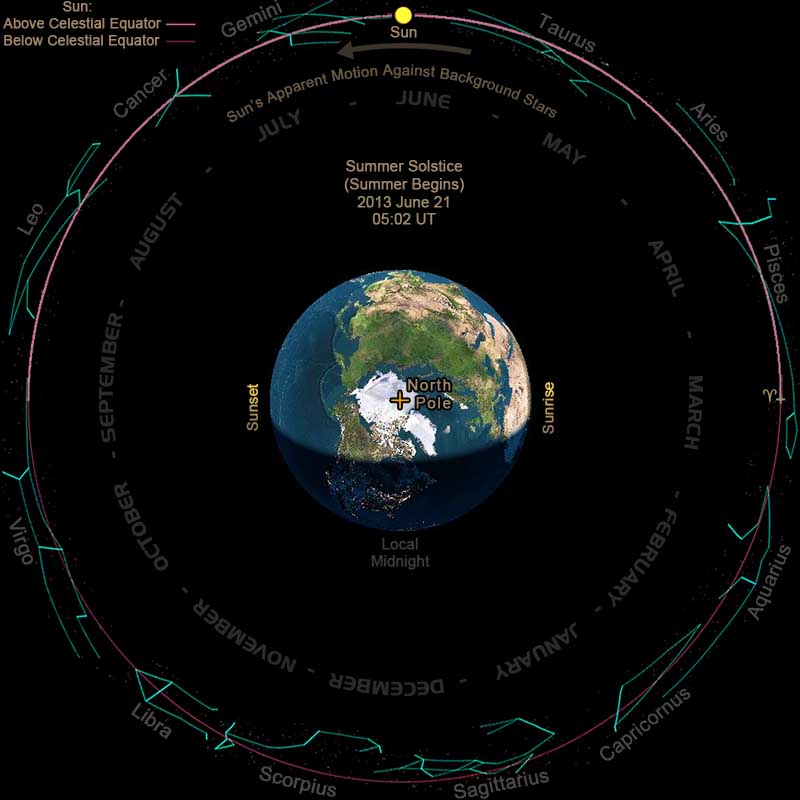
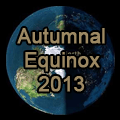
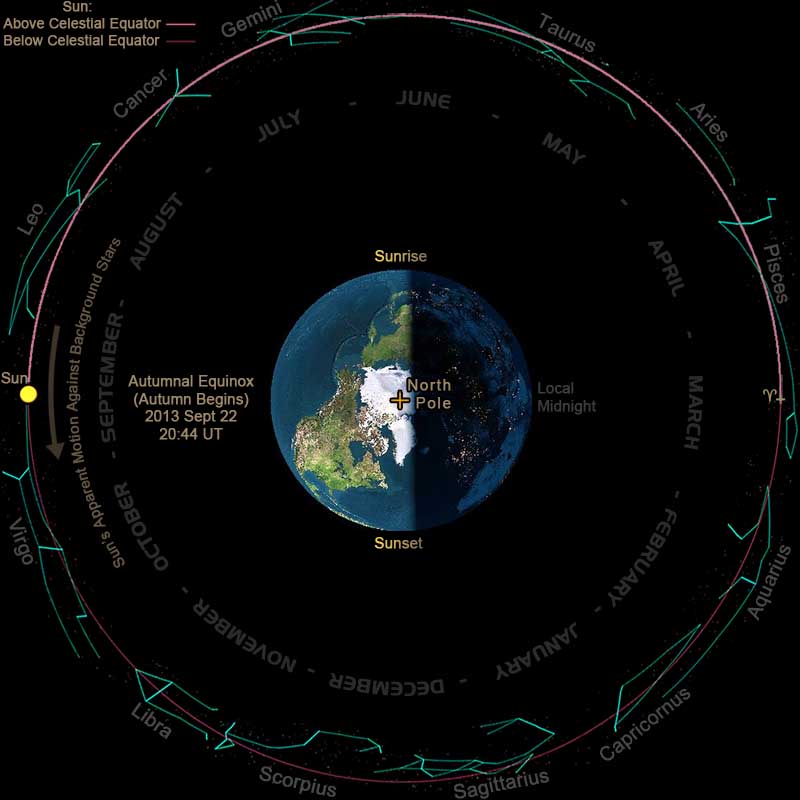
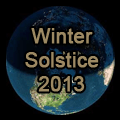
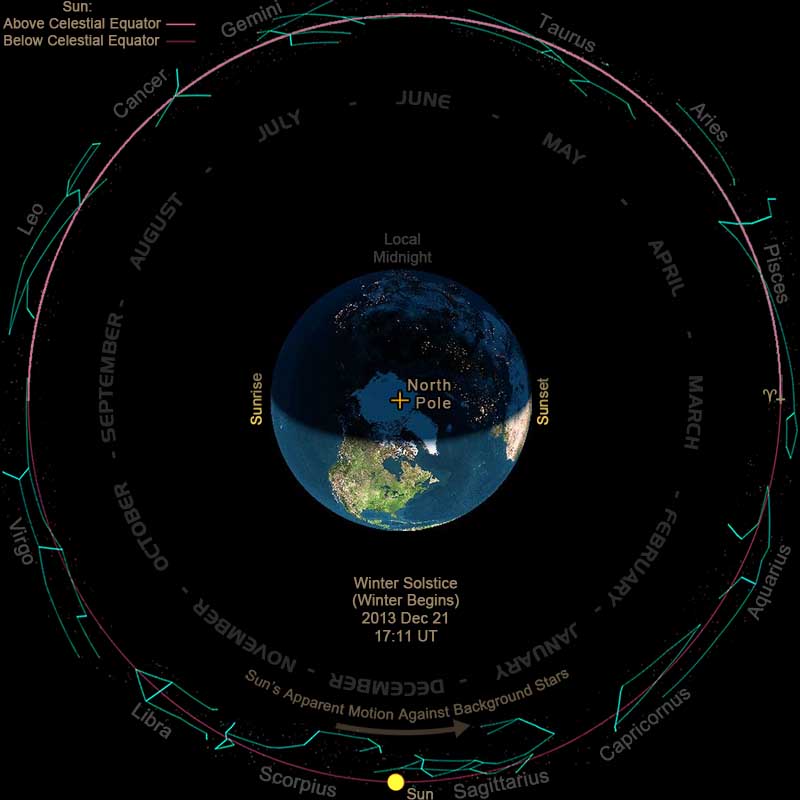
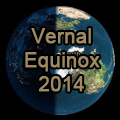
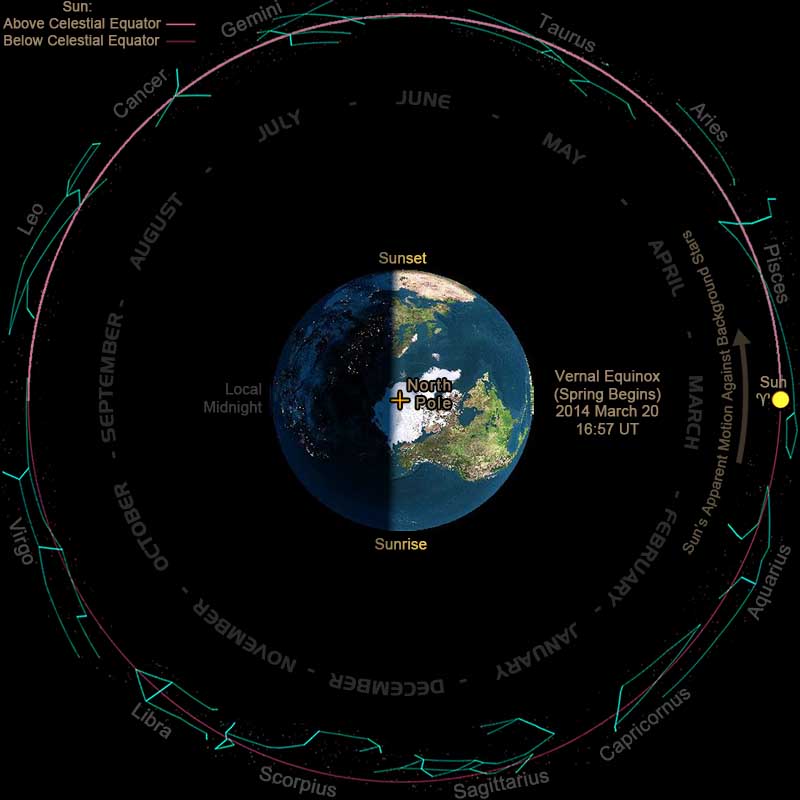
EQUINOXES & SOLSTICES THROUGH MARCH 2014
Looking down from directly above the North Pole, we see the relationship between Earth and the heavens at the instants of these equinoxes and solstices. But remember: it is actually Earth's motion in its one-year orbit around the Sun that makes the Sun appear move eastward through the constellations of the Zodiac.
Relative to the Sun, from the Vernal Equinox to the Summer Solstice, Earth spins on its axis close to 92 3/4 times; then to the Autumnal Equinox another 93 2/3 times; then to the Winter Solstice another 89 5/6 times; and finally to the next Vernal Equinox another 89 times. Expressed in days, of course, these are the respective lengths of Spring, Summer, Autumn and Winter.
You can see that succeeding Vernal Equinoxes do not recur at precisely the same time of day each year. The same is true of the Autumnal Equinox and the solstices. In fact, succeeding ones may even take place on different calendar days! Why? It is because Earth does not take an integral number of days to orbit the Sun. Since it actually takes about 365 1/4 days, which is what necessitates leap years, equinoxes and solstices must occur at slightly different times each year.
Here's a related interactive Flash demo showing the Sun's Location Along the Zodiac at Various Times of Year. Just drag the demo's red pointer right and left over the names of the months. You can compare the Sun's location in the demo with those shown above at the times of the equinoxes and solstices!
Note: it may seem odd to see in the above images that Earth's terminator does not run precisely through the North Pole at the equinoxes, since it is so often depicted that way. But in reality a bit less than half of Earth is ever in darkness, as is explained on our Effects of Twilight, and Sunrise & Sunset on Earth pages.
A different perspective on the equinoxes and solstices can be gained by watching Earth move in its orbit around the Sun, which is shown quite nicely in our Moon's Orbital Position & Phase video.
Home Intro News Gallery Sky-Gifts Bonuses Tips
Learning Ctr Help Links Credits Legal Contact Us
© 2007-
by Gary M. Winter. All rights reserved.
Interested in political cartoons and humor?
Check out The HIPPLOMATS™.
SkyMarvels, Sky Marvels, SkyMarvels.com, Equinoxes and Solstices 2013. 2013 Vernal Equinox, 2013 Summer Solstice, 2013 Autumnul Equinox, 2013 Winter Solstice, with Zodiac in background, March Equinox, June Solstice, September Equinox, December Solstice, Sun's Path Along the Ecliptic through the Zodiac, the Changing Shadow on Earth, celestia4all, celestiaforall, CELESTIA, astronomy, space, simulations, animations, downloadable astronomy posters, stars, planets, Inner Planets, Outer Planets, Inferior Planets, Superior Planets, moons, asteroids, comets, Oort Cloud, galaxy, galaxies, Milky Way, Andromeda, globular clusters, binaries, quasars, black holes, supermassive black holes, telescope, telescopes, planetarium, software, freestuff, satellites, add-ons, addons, scripts, eclipses, Solar Eclipses, Lunar Eclipses, Solar Eclipse Finder, Lunar Eclipse Finder, mutual eclipses, transits, occultations, Solar System, CELES-TOOLS, celeSTARrium, CELX, CELX programming, Freebies, multiple views, atronomical unit, light year, parsec, meteors, meteor showers, Perseids, Geminids, Leonids, barycenter, time, Time Zones, tides, alignments, conjunctions, oppositions, seasons, apogees, perigees, aphelion, perihelion, Earth, Luna, Mercury, Venus, Mars, Jupiter, Galilean Moons, Io, Europa, Ganymede, Callisto, Saturn, Titan, rings, Uranus, Neptune, Triton, E-MSpectrum, electromagnetic spectrum, astronaut, equinoxes, solstices, precession, rotation, spin, inclination, tilt, Ecliptic, orbits, ellipse, parabola, hyperbola
